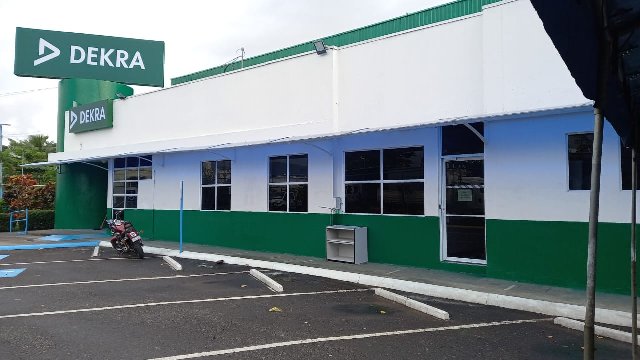Minister of MOPT Luis Amdor has announced a new decree that vehicles found to have a dangerous defect during the vehicle's technical review (DEKRA) will have to be towed from the DEKRA facilities and their license plates will be withheld until the defects are corrected and they have received approval to circulate.
This is how it reads in Executive Decree No. 43990-MOPT that was signed on April 24 by Minister Amador and the President of the Republic, Rodrigo Chaves Robles and published last Thursday, April 27 in the official newspaper La Gaceta .
The purpose of this new decree is to reform the one of October 26, 2022, which established that both cars with dangerous defects and those with serious or "negative" defects should also be towed . At that time, the Minister said that it had been a mistake and that it would be corrected.
With this reform, the chief eliminated the criteria for cars with negative or serious faults and only left the rule for cars with dangerous faults.
The technical revision manual specifies that dangerous faults are "those Serious Defects that imply an imminent danger to the safety of the vehicle, that of other vehicles, its occupants or other users of the public highway, which generates the obligation to take the vehicle back to the RTV Station to verify that the defect has been corrected”.
The first article establishes the modification of sections 22.3 and 22.4 and the penultimate and last paragraphs (where it orders the removal of the towed vehicle) of article 22 of Executive Decree No. 30184-MOPT.
This article now dictates that they be read as follows:
"The vehicle to which at least one dangerous defect has been assigned, may not circulate on public land roads, so it must be transported by third-party means, from the Technical Vehicle Inspection Station (CJVE) to the chosen repair shop and return for re-inspection or inspection. The corresponding CJVE will take the corresponding measures in coordination with the General Directorate of the Traffic Police, so that the registration plates of the vehicle involved are retained, when any of the detected defects is dangerous according to the definition of the aforementioned manual” translates the decree Posted on April 27.
We are awaiting further information on what is considered a "dangerous" defect as opposed to "serious". The current system indicates "leves" and "graves". Graves include licence plate lights, horn and frayed seat belts which would normally not require towing and can be easily repaired.
The Decree outlines the following defects:
- Minor defect: The one that must be corrected by the owner of the vehicle, not being obliged to return to the RTV station to verify the modification.
- Serious defect: The one that must be corrected, continuing the obligation of the owner of the vehicle to take it to the RTV station to verify the correction.
- Dangerous defect: One that implies an imminent danger to road safety and to other vehicles, drivers, passengers and bystanders, which generates the obligation for the owner of the vehicle to take it back to the RTV station to verify that the defect has been corrected.
Without a licence plate the vehicle would need to be towed back to reinspection, and await the reinstallation of plates once approved.
The current system allowed for 30 days to have repairs made and return for reinspection.










